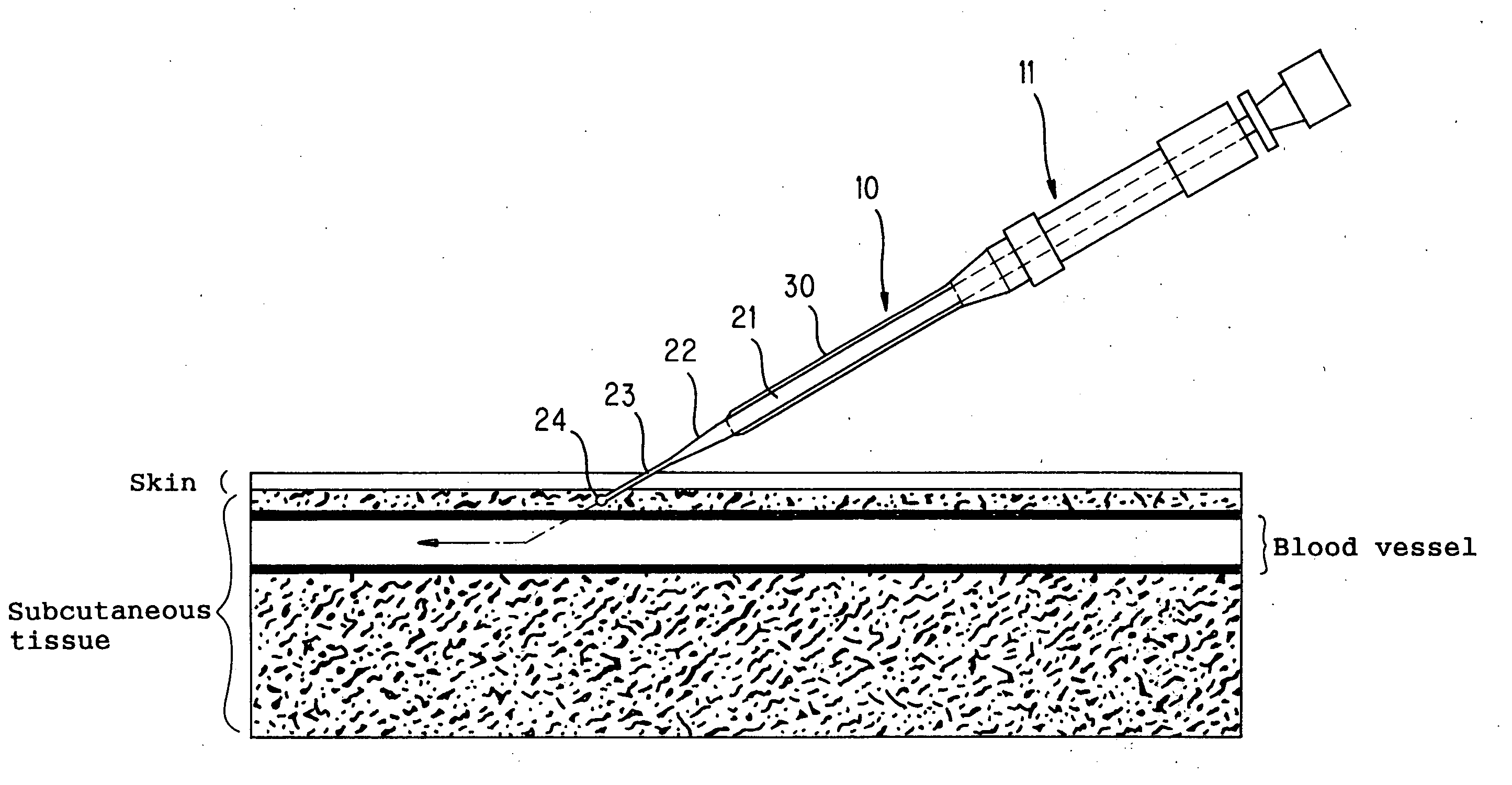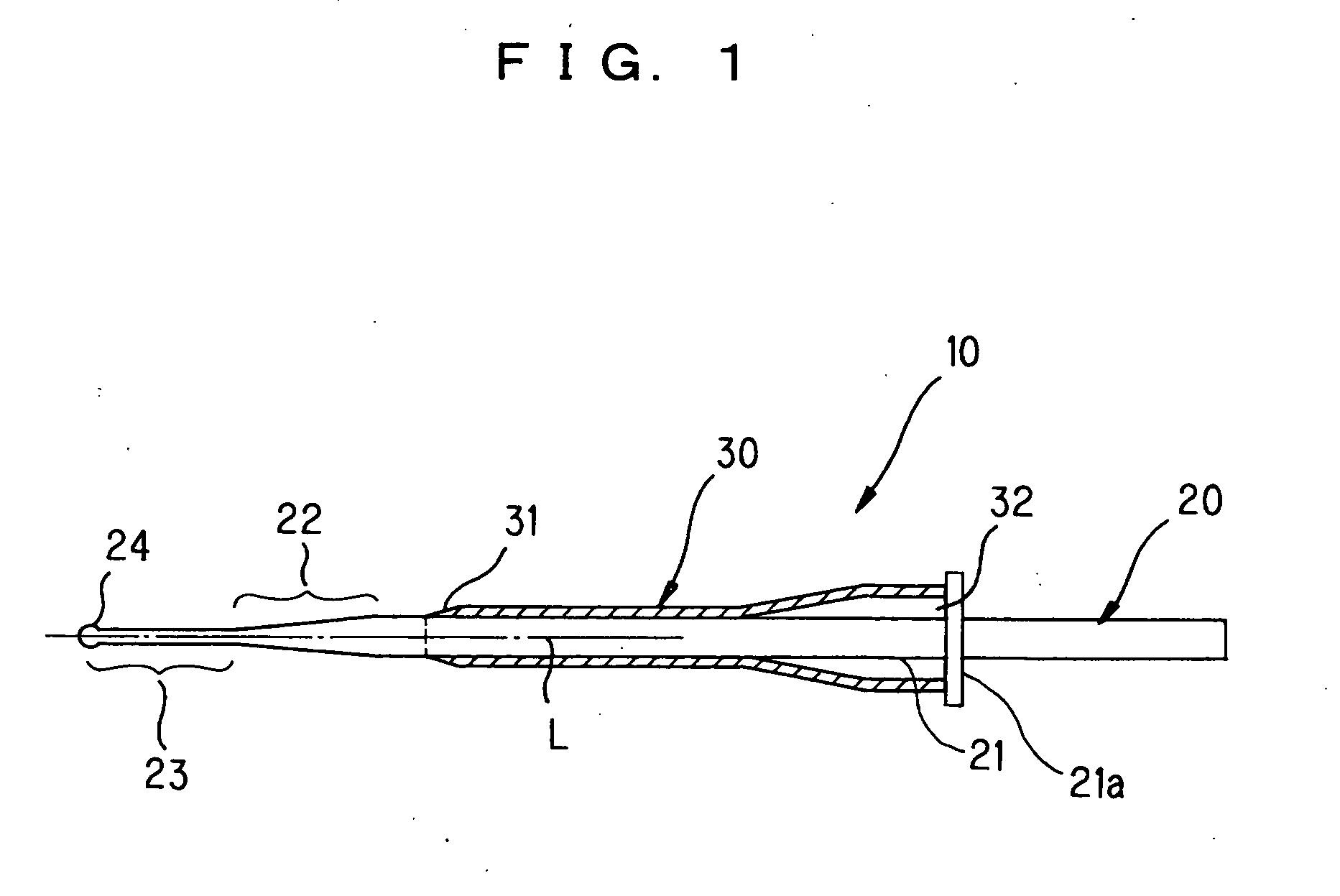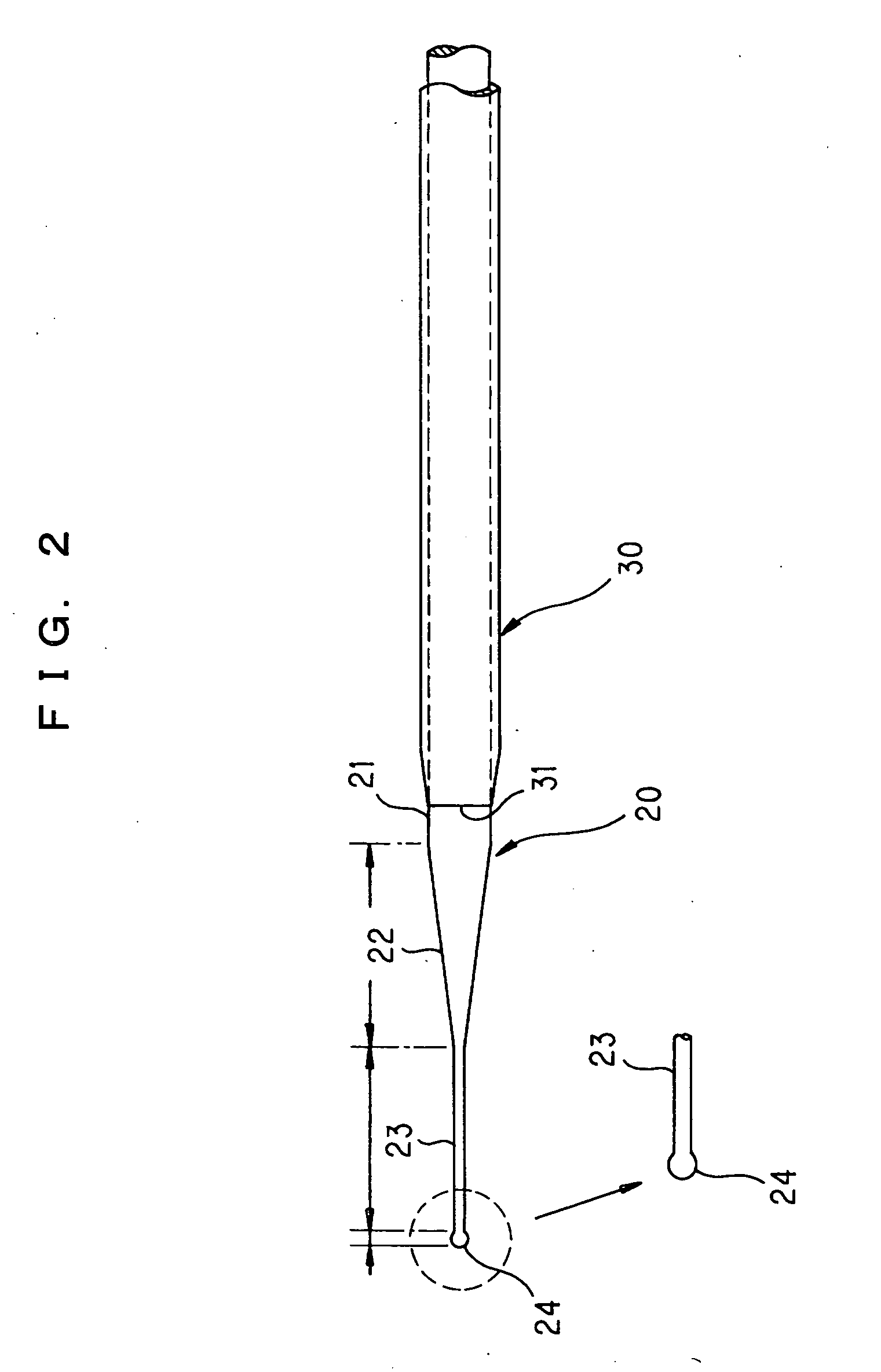Needle for medical use
- Summary
- Abstract
- Description
- Claims
- Application Information
AI Technical Summary
Benefits of technology
Problems solved by technology
Method used
Image
Examples
first embodiment
[0038]FIG. 1 to FIG. 5 show the present invention.
[0039] As shown in FIG. 1, a medical needle 10 is used by inserting an inner needle 20 into an outer tube needle 30 with integrally combining them with each other. Herein, an application where the medical needle 10 is connected to each of the blood accesses for the arterial side and for the venous side in a patient's arm during hemodialysis will be used for description.
[0040] As shown in FIG. 3, the inner needle 20 is a solid rod-like needle made of a metal such as stainless steel or titanium, for example, and provides a portion which, in using the medical needle 10, is first inserted into a punctured hole which was once formed in a patient's arm. The word “solid rod-like” used here means that the inner needle 20 is not structured as a tubular rod, which has a space inside it, but as a solid rod, having no space inside it. In addition, the term “rod-like” is used as opposed to the term “tubular,” and it is needless to say that the t...
second embodiment
[0057]FIG. 6 shows the present invention.
[0058] In the second embodiment, the diameter of the spherical crown portion 24A is adapted to be still larger than the outside diameter of the spherical crown portion 24 according to said first embodiment. Specifically, the diameter of the spherical crown portion 24A may be 1.2 to 1.3 mm, for example, while the outside diameter of a small-diameter portion 23 is 0.72 mm (22 G).
[0059] Thereby, the spherical surface of the spherical crown portion 24A can be brought into contact with the living tissue over a wider angular range, and the small-diameter portion 23 can advance more smoothly after the spherical crown portion 24A is inserted into the punctured hole. The portions similar to those of the first embodiment are provided with the same reference signs to avoid duplication of the explanations.
third embodiment
[0060]FIG. 7 shows the present invention.
[0061] In the third embodiment, the diameter of the spherical crown portion 24B is adapted to be approximately equal to the outside diameter of said small-diameter portion 23, and the diameter of the spherical crown portion 24B may be 0.72 mm, for example, while the outside diameter of the small-diameter portion 23 is 0.72 mm (22 G).
[0062] Thereby, in the third embodiment, the spherical crown portion 24B can be easily machined, which allows cost reduction, and the spherical crown portion 24B can be more smoothly inserted into the punctured hole. The portions similar to those of the first embodiment are provided with the same reference signs to avoid duplication of the explanations.
[0063]FIG. 8 shows a fourth embodiment of the present invention.
[0064] In the fourth embodiment, said inner needle 20a is provided with a through hole 25 which substantially passes through the axis over the entire length thereof. The through hole 25 has a very fi...
PUM
 Login to view more
Login to view more Abstract
Description
Claims
Application Information
 Login to view more
Login to view more - R&D Engineer
- R&D Manager
- IP Professional
- Industry Leading Data Capabilities
- Powerful AI technology
- Patent DNA Extraction
Browse by: Latest US Patents, China's latest patents, Technical Efficacy Thesaurus, Application Domain, Technology Topic.
© 2024 PatSnap. All rights reserved.Legal|Privacy policy|Modern Slavery Act Transparency Statement|Sitemap



